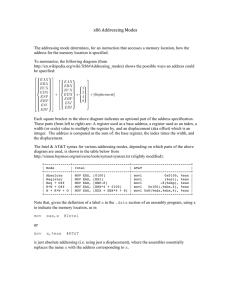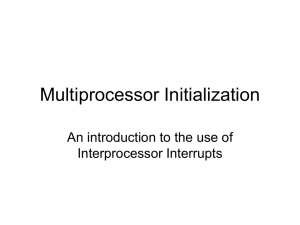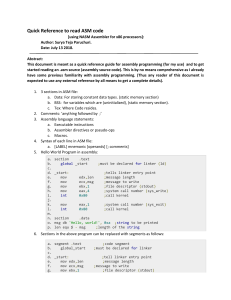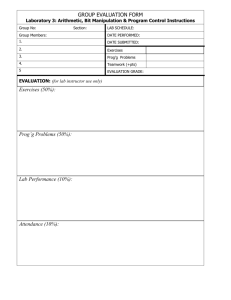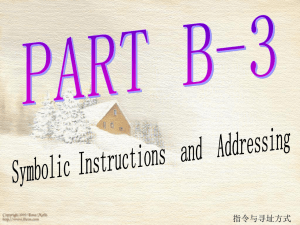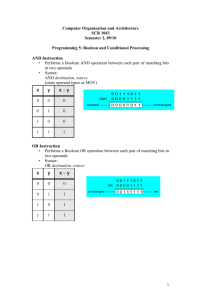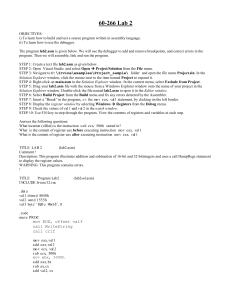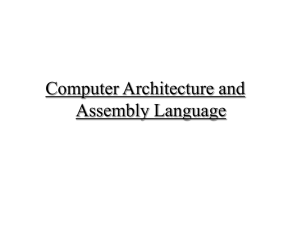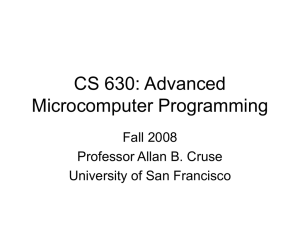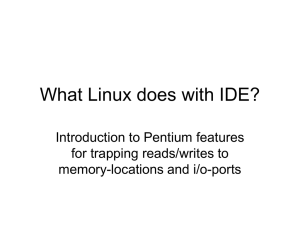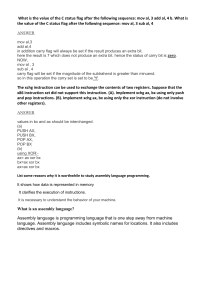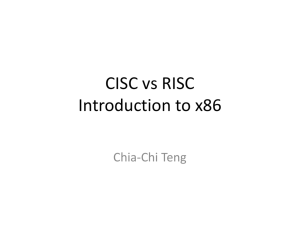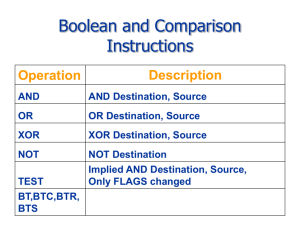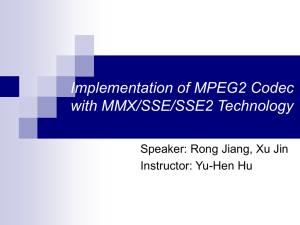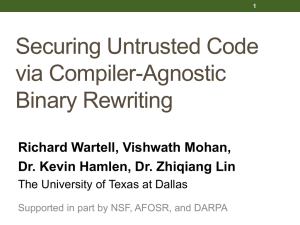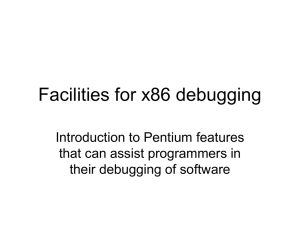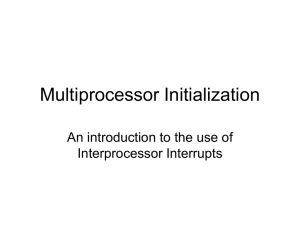Tutorial-1 Computer Organization
advertisement
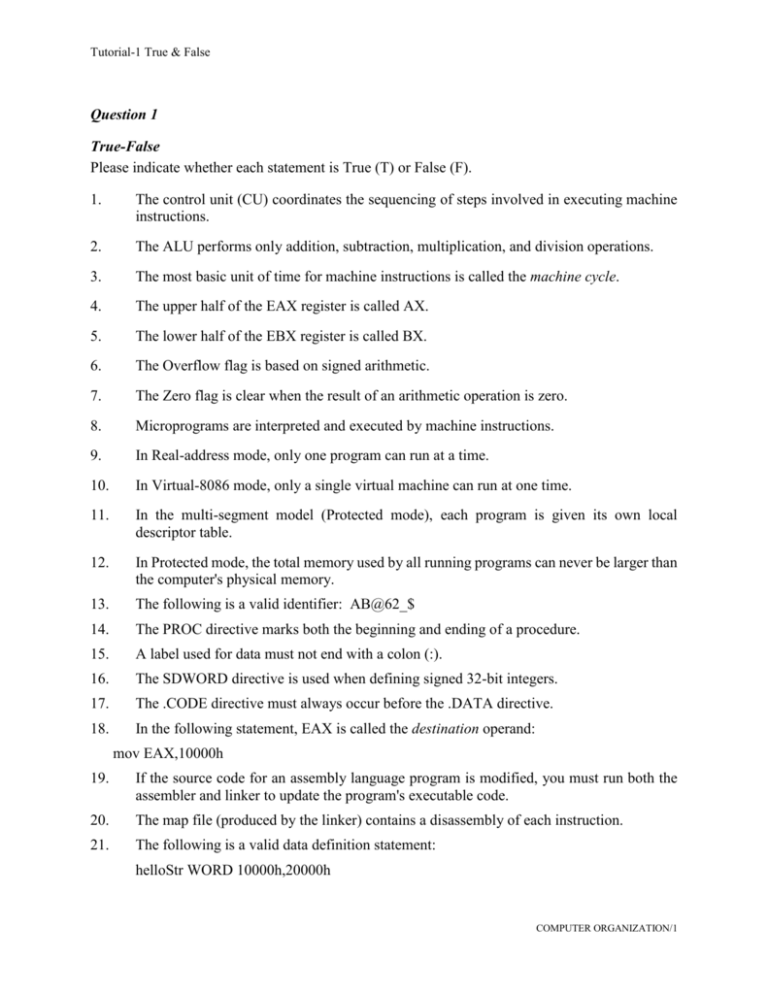
Tutorial-1 True & False Question 1 True-False Please indicate whether each statement is True (T) or False (F). 1. The control unit (CU) coordinates the sequencing of steps involved in executing machine instructions. 2. The ALU performs only addition, subtraction, multiplication, and division operations. 3. The most basic unit of time for machine instructions is called the machine cycle. 4. The upper half of the EAX register is called AX. 5. The lower half of the EBX register is called BX. 6. The Overflow flag is based on signed arithmetic. 7. The Zero flag is clear when the result of an arithmetic operation is zero. 8. Microprograms are interpreted and executed by machine instructions. 9. In Real-address mode, only one program can run at a time. 10. In Virtual-8086 mode, only a single virtual machine can run at one time. 11. In the multi-segment model (Protected mode), each program is given its own local descriptor table. 12. In Protected mode, the total memory used by all running programs can never be larger than the computer's physical memory. 13. The following is a valid identifier: AB@62_$ 14. The PROC directive marks both the beginning and ending of a procedure. 15. A label used for data must not end with a colon (:). 16. The SDWORD directive is used when defining signed 32-bit integers. 17. The .CODE directive must always occur before the .DATA directive. 18. In the following statement, EAX is called the destination operand: mov EAX,10000h 19. If the source code for an assembly language program is modified, you must run both the assembler and linker to update the program's executable code. 20. The map file (produced by the linker) contains a disassembly of each instruction. 21. The following is a valid data definition statement: helloStr WORD 10000h,20000h COMPUTER ORGANIZATION/1 Tutorial-1 True & False 22. The following is a valid data definition statement: helloStr DWORD 2 True-False Please indicate whether each statement is True (T) or False (F). 1. The following statement will assemble without errors: mov WORD PTR [eax], 1234h 2. The following instruction will produce FFFFFFFCh in EAX: movsx eax,-4 3. The following instruction will assemble correctly: inc [esi] 4. The following instructions will set the Overflow flag: mov al,125 sub al,-4 5. The syntax for the MOV instruction is: MOV destination, source. 6. The MOV instruction requires both operands to be the same size. 7. The MOV instruction permits a move between two memory operands. 8. The EIP register cannot be the destination operand of a MOV, ADD, or SUB instruction. 9. The MOVZX instruction can use a variable as the destination operand. 10. If AL contains +127 and you add 3 to AL, the Overflow flag will be set. 11. The Overflow flag may be set when adding a positive integer to a negative integer. 12. The following instruction is legal: inc [esi] 13. The WriteBin procedure does not display leading zeros. 14. The WriteHex procedure does not display leading zeros. 15. The WriteDec procedure does not display a minus sign. 16. The first value added to a stack is also the first one to be removed. COMPUTER ORGANIZATION/2 Tutorial-1 True & False Question 2 a) Show that the combinatorial circuits in Figure 1 are equivalent. Write the statement. X Y Z Figure 1 Question 3 1) List THREE (3) 32 bit general –purpose register 2) Describe TWO (2) differences of real-address mode and protecting mode. 3) Declare an unsigned 16 bit integer variable name wArray that uses three initializers. COMPUTER ORGANIZATION/3
